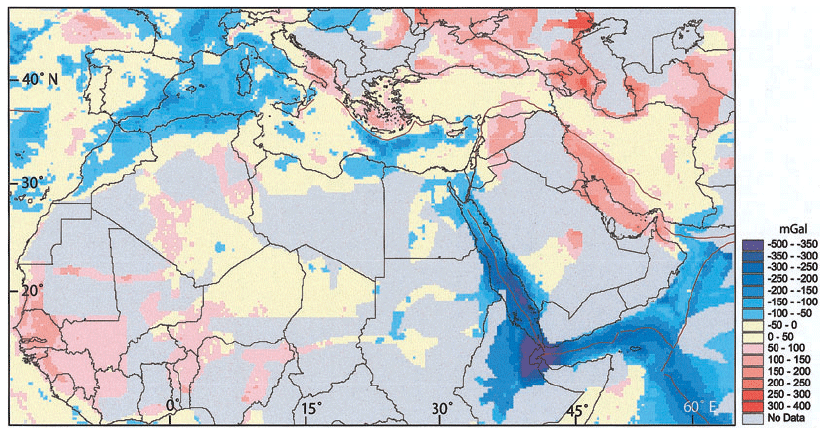Home
| Publications
Seber, D., Sandvol, E., Sandvol, C., Brindisi, C., and Barazangi,
M.
Crustal model for the Middle East and North Africa region: Implications
for the isostatic compensation mechanism
Geophysical Journal International, 147, 630-638, 2001.
Abstract
We present a new 3-D crustal model for the Middle
East and North Africa region that includes detailed topography, sediment thickness,
and Moho depth values. The model is obtained by collecting, integrating, and interpolating
reliable, published sedimentary rock thickness and Moho depth measurements in
the Middle East and North Africa region. To evaluate the accuracy of the model,
the 3-D gravity response of the model is calculated and compared with available
observed Bouguer gravity anomalies in the region. The gravity modelling shows
that the new crustal model predicts large portions of the observed Bouguer anomalies.
However, in some regions, such as the Red Sea and Caspian Sea regions, where crustal
structure is relatively well-determined, the residual anomalies are of the order
of a few hundred milligals. Since the new crustal model results in large residual
anomalies in regions where reasonably good constraints exist for the model, these
large residuals cannot simply be explained by inaccuracies in the model. To analyze
the cause of these residuals further we developed an isostatically compensated
(Airy-type) Moho-depth model and calculated its gravity response. Isostatic gravity
anomalies are in nearly perfect agreement with the observed gravity values. However,
the isostatic model differs significantly from the new (3-D) crustal model. If
isostasy is to be maintained, crustal and /or upper mantle lateral density variations
are needed to explain the large observed gravity residuals.
Copyright Statement
This paper was published in Geophysical Journal International by Blackwell
Publishing. Blackwell Publishing retains the copyright.
Copyright
© 2001 Blackwell Publishing
Key Figures and Captions
Figure 5.
Map of residual (observed–calculated) gravity anomalies. Blue tones represent
regions where the model predicts much higher gravity anomalies, and pink tones
represent regions where the model predicts lower anomalies compared to observed
gravity values. Current plate boundaries are shown by the red lines.

Home
| Publications

